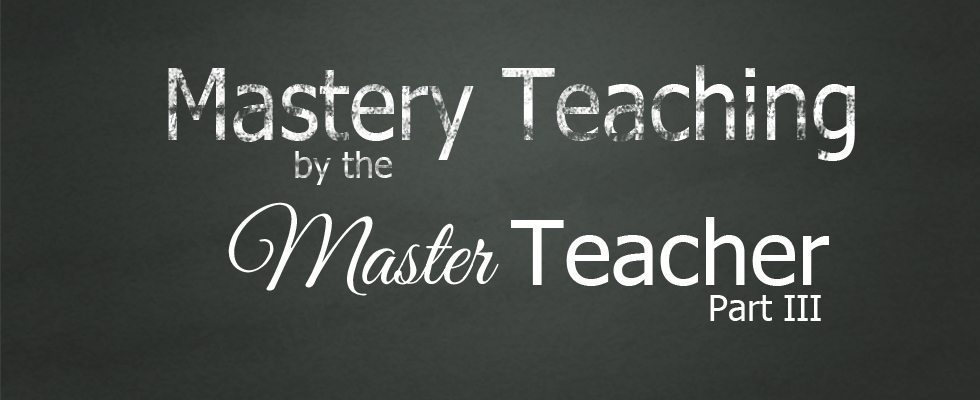Please read John, chapters 13-17.
We are taking a look at the last conversation Jesus had with His disciples, at the Last Supper, and on the way to the Garden of Gethsemane. These chapters record the very important lessons that Christ wanted His followers to know before He left them. Throughout this conversation, we see Jesus, the Master Teacher, and how he treats questions from several different personality types.
We have discussed Peter, the Distracted Student. A natural leader, he was always losing focus, changing the subject, and making everything about himself. Then, we discussed Thomas, the Questioning Student, who had a question for every answer. Today, let’s look at another type of student. The next disciple to speak in this conversation was Philip.
John 14:8-10, “Philip saith unto him, Lord, shew us the Father, and it sufficeth us. Jesus saith unto him, Have I been so long time with you, and yet hast thou not known me, Philip? he that hath seen me hath seen the Father; and how sayest thou then, Shew us the Father? Believest thou not that I am in the Father, and the Father in me? the words that I speak unto you I speak not of myself: but the Father that dwelleth in me, he doeth the works.”
THE VISUAL LEARNER
Some students learn best with their ears, and some with their eyes. Philip would be the latter. He would be the kid who couldn’t wait until lab day in science class. He wanted to see the process. A Philip may struggle with taking notes and sitting still through lectures. He wanted to be hands-on. “Show me.”
Philip is the reason why teachers stay up late creating visual aids for their students. Sight learners will make up a portion of every classroom. It is important to incorporate all five senses when teaching children, in a classroom or at home. Each child learns best in a different way.
Allow me to digress a bit here. Please read the verses listed above again (John 14:8-10). As a teacher, what I see here is a change in the dynamic of this conversation. You see, Jesus wanted this lesson to be about love. (John 13:34-35) He started out teaching the disciples about loving one another. As they began to ask questions, he patiently answered those questions, and the conversation began to shift course to Heaven and the Heavenly Father.
But, when Philip spoke, he did not ask a question. He made a statement. It appears that Jesus answered Philip more harshly than he had the other disciples. It is important how a learner approaches a teacher. If you have sincere questions, that is a good thing! A teacher wants to teach a curious student! Remember, “There are no dumb questions”? But, it seems that Philip was making a statement of ‘fact,’ saying possibly, “Well, you’ve never taught us about the Heavenly Father before.” Nothing could have been farther from the truth! Notice that Jesus took issue with this. He asked Philip three very pointed questions to prove that Philip’s statement was false. I understand this approach. When a teacher is teaching, and a student makes a blatantly inaccurate statement, the teacher must show this statement untrue immediately, or the other students in the room will wonder if it is true. Jesus is an amazing teacher! There are so many things to learn from Him in simply how he interacted with others.
One more observation here. Asking questions is an excellent teaching method. I had a wonderful English teacher in high school. He taught me how to love the Classics. He taught me many things, but one thing he ALWAYS did—he answered EVERY question with a question. This is brilliant, and of course, was learned from the Master Teacher in Scripture. Jesus answered Philip’s question with 3 questions of His own. Moms, learn to answer your child’s questions with questions. Make them think. Don’t just give them answers. Help them arrive at answers by asking questions. This teaching trick helps a student reach their full potential.
Next week we will complete this series by looking at one more personality type of students.







Hmm it appears like your website ate my first comment (it was super long) so I guess I’ll just sum it up what I wrote and say, I’m thoroughly enjoying your blog. I too am an aspiring blog writer but I’m still new to everything. Do you have any points for novice blog writers? I’d definitely appreciate it.